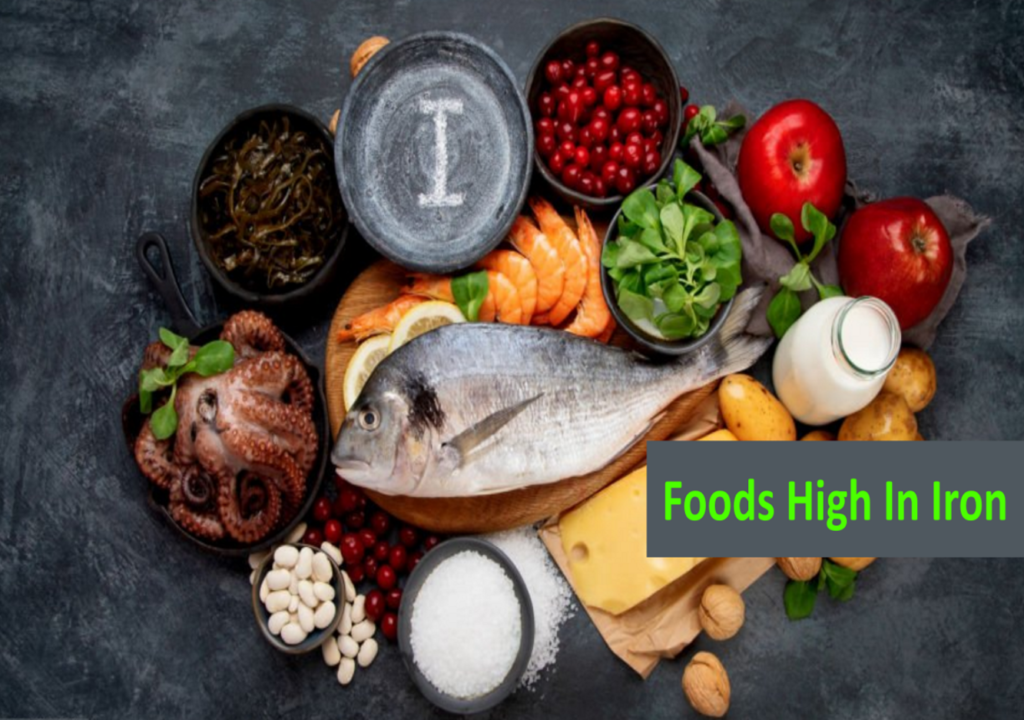Iron is an essential mineral that plays a crucial role in our overall health and well-being. It is responsible for carrying oxygen throughout the body and aiding in the production of red blood cells. In this blog post, we will explore a wide range of foods that are naturally high in iron, providing you with valuable information to help you maintain optimal iron levels and prevent iron deficiency anemia.

1. Understanding Iron and Its Importance
Before we dive into the foods rich in iron, let’s first understand why this mineral is vital for our health. Iron supports the transportation of oxygen from the lungs to all body cells, helping us stay energized and focused. It also aids in the production of enzymes and plays a crucial role in maintaining a healthy immune system. Insufficient iron levels can lead to fatigue, weakness, and decreased cognitive function.
2. Heme vs. Non-Heme Iron
Iron can be found in two forms: heme and non-heme iron. Heme iron is derived from animal sources, such as meat and poultry, and is more easily absorbed by the body. Non-heme iron, on the other hand, is found in plant-based foods and is not as readily absorbed. We will explore both sources of iron to provide options for individuals following different dietary preferences.
3. Foods High In Iron: Animal-Based Foods High in Iron
For those who consume animal products, incorporating iron-rich foods into their diet is relatively straightforward. Red meats like beef, lamb, and liver are excellent sources of heme iron. Poultry, such as chicken and turkey, also contain significant amounts of iron. Additionally, seafood, including oysters, clams, and mussels, provides a good dose of this essential mineral.
4. Plant-Based Foods High in Iron
If you follow a vegetarian or vegan diet, there are plenty of plant-based options that can help you meet your iron needs. Legumes, such as lentils, chickpeas, and kidney beans, are excellent sources of iron. Dark leafy greens like spinach, kale, and Swiss chard are also rich in this mineral. Nuts and seeds, particularly pumpkin seeds, cashews, and almonds, can contribute to your daily iron intake. Additionally, fortified cereals and grains can be a convenient way to supplement your iron levels.
5. Enhancing Iron Absorption
To maximize iron absorption, it’s crucial to pair iron-rich foods with sources of vitamin C. Citrus fruits, strawberries, bell peppers, and broccoli are all excellent choices. Avoid consuming iron-rich foods with calcium-rich or high-caffeine foods, as they can inhibit iron absorption. Cooking in cast-iron cookware and using acidic ingredients like vinegar can also enhance iron absorption.
6. Cooking Tips and Recipe Ideas
Incorporating iron-rich foods into your meals can be both delicious and satisfying. Try marinating meats in citrus juices or using lemon vinaigrette on your leafy green salads. Experiment with stir-fries that include tofu, legumes, and a variety of colorful vegetables. For a quick and nutritious snack, roast chickpeas with a sprinkle of iron-rich spices like cumin or paprika.
Conclusion
Maintaining adequate iron levels is crucial for overall health and well-being. By incorporating a diverse range of iron-rich foods into your diet, whether you follow an animal-based or plant-based eating pattern, you can ensure you meet your daily iron requirements. Remember to combine your iron sources with vitamin C-rich foods and make thoughtful choices to enhance iron absorption. Prioritize your health by nourishing your body with these tasty and nutrient-packed foods.
By following this comprehensive guide, you can take charge of your iron intake and promote optimal wellness through a well-balanced diet.

Pingback: Top 10 Iron-Rich Foods to Incorporate into Your Diet - Health Tips And Exercise Programs
Pingback: Iron Rich Foods: Boost Your Energy and Enhance Well-Being